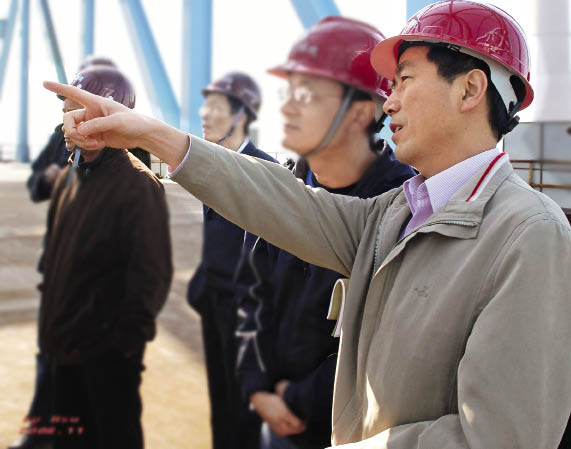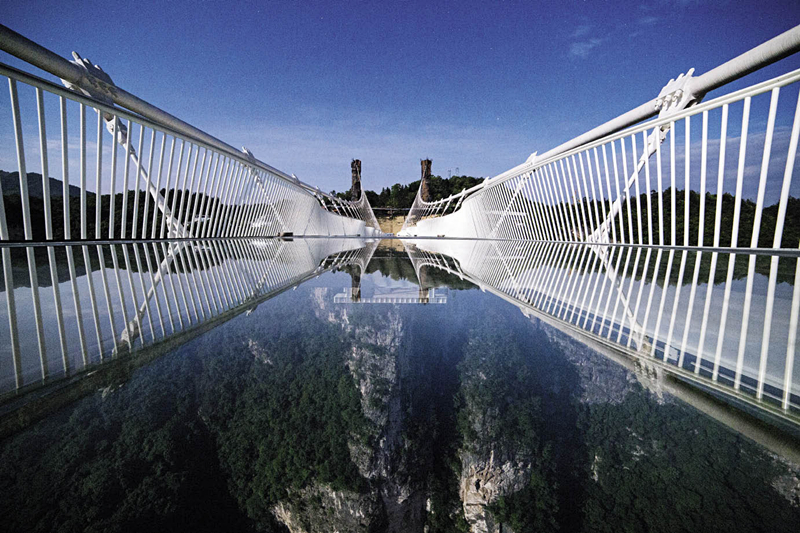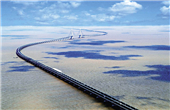Gao Zongyu: Engineer and Designer of World-class Bridges
China Today by Zhou Lin, October 13, 2016 Adjust font size:
Planned in 2003, construction of the 1,092-meter-long Shanghai-Nantong Railway Yangtze River Bridge – the world’s longest rail-cum-road cable-stayed steel bridge – started in 2014. On completion in 2019, it will span the 130 km. between the two cities, shortening to one hour the drive from Shanghai to Nantong.
Gao Zongyu, chief engineer of the China Railway Major Bridge Reconnaissance & Design Institute Co., Ltd. (BRDI) designed the bridge. In his illustrious career he has designed and overseen the construct of two dozen bridges.
The Long Game
“Early in the 1970s, world-class bridges were associated with Europe and the United States, and in the 1990s with Japan. But in the 21st century, China’s bridges polarize world attention.” This is a popular observation among experts in the bridge construction industry, where China is now predominant as regards the quantity and quality of bridges it constructs. Their long main spans correlate to the engineering complexity of their design and construction. China’s innovations in the bridge industry also command respect.

Gao Zongyu does field investigations at the bridge construction site.
Gao Zongyu announced at the 2012 International Bridge Science & Technology Forum (IBF) that the Shanghai-Nantong Railway Yangtze River Bridge, whose 1,092-meter main span is twice that of the Wuhan Tianxingzhou Rail-cum-road Yangtze River Bridge, will on completion be the world’s first of this type to exceed a length of 1,000 meters.
Aside from its 1,092-meter span, the Shanghai-Nantong Bridge has, at 325 meters, the world’s tallest main pylon. Its construction requires 480,000 tons of steel – equal to that needed for 12 Bird’s Nests (National Stadium in Beijing), and 2.3 million cubic meters of concrete, equal to that for eight National Theaters. Upon completion it will be capable of withstanding 150-166.44 km/h gales, an 8.0-magnitude earthquake, and a 100,000-ton ship collision. Piers 28 and 29 are crucial to the whole project. The caisson, or foundation, of bridge pier No. 29 is 56 meters tall and weighs more than 15,000 tons – 500 tons more than that of pier No. 28. It is the world’s biggest steel caisson.

The world’s longest span glass bridge at Zhangjiajie Great Canyon.
The project’s scale and technical difficulties have resulted in world breakthroughs in national bridge building history. It represents the highest level of bridge construction technology in China and the world as a whole.
The field investigations that Gao Zongyu began in 2003 entailed frequent journeys between Wuhan, Nantong, and Shanghai.
“I considered 10 or more locations for the bridge, and finally focused on five. This was the most challenging task,” Gao Zongyu said. “We needed to give full consideration to multiple factors, including smooth transportation over the Yangtze River, local geological and hydrological conditions, flood prevention, the negotiation of highway and railways junctures, and demolition of surrounding land constructions.” Both Shanghai Municipality and Jiangsu Province are populous, well-developed areas where large construction projects may involve various stakeholders’ interests. This often makes them difficult to carry through. But the Shanghai-Nantong Railway, as a three-in-one inter-city railway, cross-province railway, and expressway which, if built separately, would cost RMB 10 billion more, is welcomed by all.”
Gao Zongyu’s colleagues say that whenever presented with a blueprint, he immediately spots any problems. Gao often observes, “Scientists make achievements in the laboratory through trial and error, but engineers cannot make even a minor mistake, as quality and safety are the bottomline of our designed projects.” Chair of the BRDI No.1 Design Institute Liu Hanshun recalled, “Gao Zongyu has never lost confidence over the past decades, no matter how big the project.”
Designated “National Design Master” in 2011, Gao was responsible for the first high-speed railway bridges spanning the Yangtze River and Yellow River. Also one of the chief designers of the Hangzhou Bay Bridge and East China Sea Bridge, he is an acknowledged expert in the design of large-size rail-cum-road bridges.
In 2014, the “Construction methodology for rail-cum-road cable-stayed steel bridge of triple main trusses & cable planes” that Gao devised won him the National Science & Technology Progress Award.

